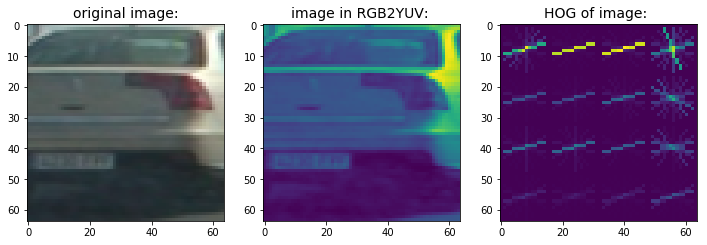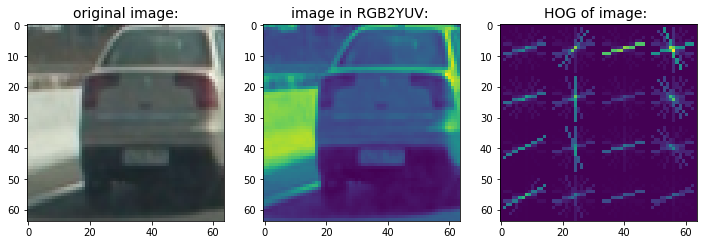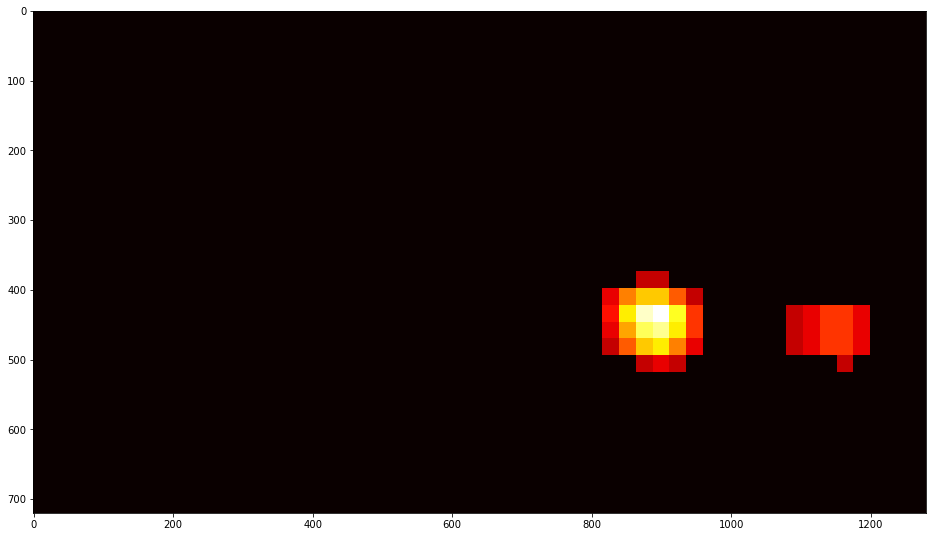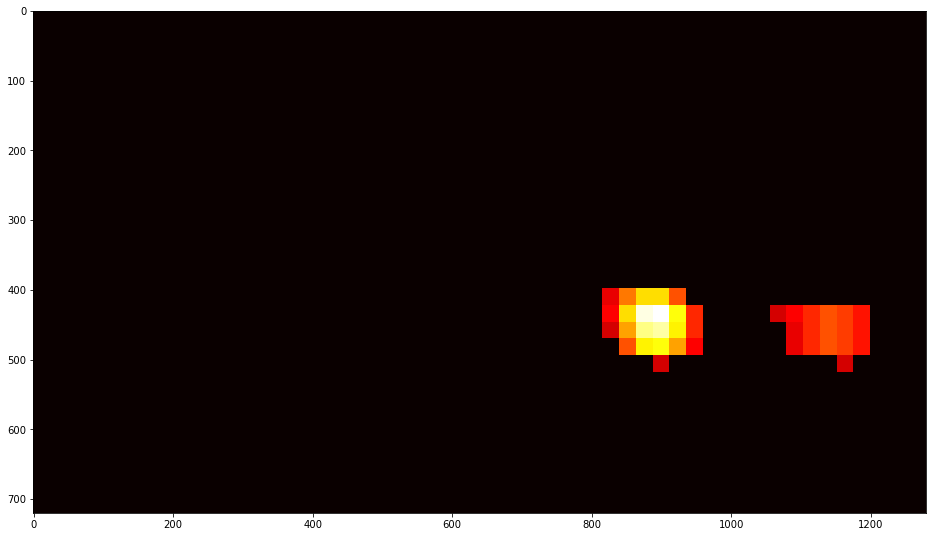Udacity Vehicle Detection and Tracking Project
Vehicle Detection Project
The goals / steps of this project are the following:
- Perform a Histogram of Oriented Gradients (HOG) feature extraction on a labeled training set of images and train a classifier Linear SVM classifier
- Optionally, you can also apply a color transform and append binned color features, as well as histograms of color, to your HOG feature vector.
- Note: for those first two steps don't forget to normalize your features and randomize a selection for training and testing.
- Implement a sliding-window technique and use your trained classifier to search for vehicles in images.
- Run your pipeline on a video stream (start with the test_video.mp4 and later implement on full project_video.mp4) and create a heat map of recurring detections frame by frame to reject outliers and follow detected vehicles.
- Estimate a bounding box for vehicles detected.
Rubric Points
Here I will consider the rubric points individually and describe how I addressed each point in my implementation.
Writeup / README
1. Provide a Writeup / README that includes all the rubric points and how you addressed each one.
You're reading it!
Histogram of Oriented Gradients (HOG)
1. Explain how (and identify where in your code) you extracted HOG features from the training images.
I started by reading in all the vehicle and non-vehicle images. Here is an example of one of each of the vehicle and non-vehicle classes:
Images of vehicle and non-vehicle: 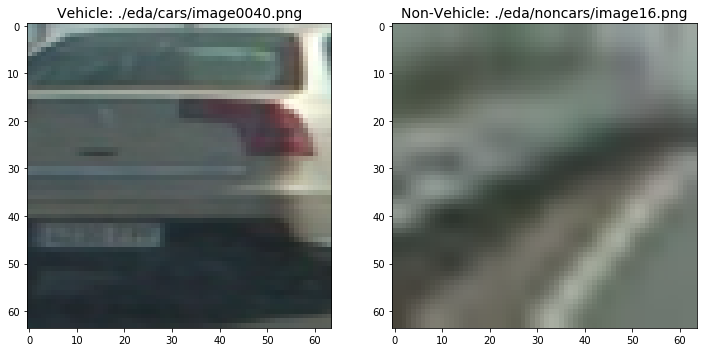
I then explored different color spaces and different skimage.hog() parameters (orientations, pixels_per_cell, and cells_per_block). I used images from each of the two classes and displayed them to get a feel for what the skimage.hog() output looks like.
Here is an example using the YUV color space and HOG parameters of orientations=9, pixels_per_cell=(8, 8) and cells_per_block=(2, 2):
Vehicle image, image in YUV color space, HOG:
non-vehicle image, image in YUV color space, HOG:
The code used HOG is contained in def loadimageandfeatures() of the file tool_functions.py.
Codes in the cell Decide if need to train a classifier or just load from previous model will decide if it's needed to call def train_classifier(): and def loadimageandfeatures() .
2. Explain how you settled on your final choice of HOG parameters.
I started a pipeline with the parameters in the lectures: color_space = grayscale, pix_per_cell = 8, cell_per_block = 2, orient = 9. Then I experimented with different color_space, 'HSV' and 'HLS' doesn't seem to work, while 'YCrCb' was able to produce a working but wobbly result: https://www.youtube.com/watch?v=Q98r-bd85Zw&feature=youtu.be&t=7s
I also experimented with pix_per_cell, it seems to have better results on test_video.mp4 if I set pix_per_cell = 4, but it will make processing the whole project_video.mp4 very slow, which is bad for finding good parameters.
After I used the technique of averaging heatmaps to remove false positives, I used pix_per_cell = 16 to have faster processing speed.
3. Describe how (and identify where in your code) you trained a classifier using your selected HOG features (and color features if you used them).
I trained a linear SVM using all 3 features mentioned mentioned in the class: Spatial Binning of Color, Histograms of Color, and HOG.
The codes are in def train_classifier() and def extract_features(), training accuracy is above 98% .
Sliding Window Search
1. Describe how (and identify where in your code) you implemented a sliding window search. How did you decide what scales to search and how much to overlap windows?
The codes are in find_cars() of tool_functions.py, it calls bin_spatial(), color_hist(), get_hog_features() to get color features and HOG features of a part of whole image frame, and use the SVM classifier trained to identify if it's a vehicle or non-vehicle image.
I settled with scale = 1.5 and cells_per_step = 1 by experimenting on test images. The following are results of 2 test images:
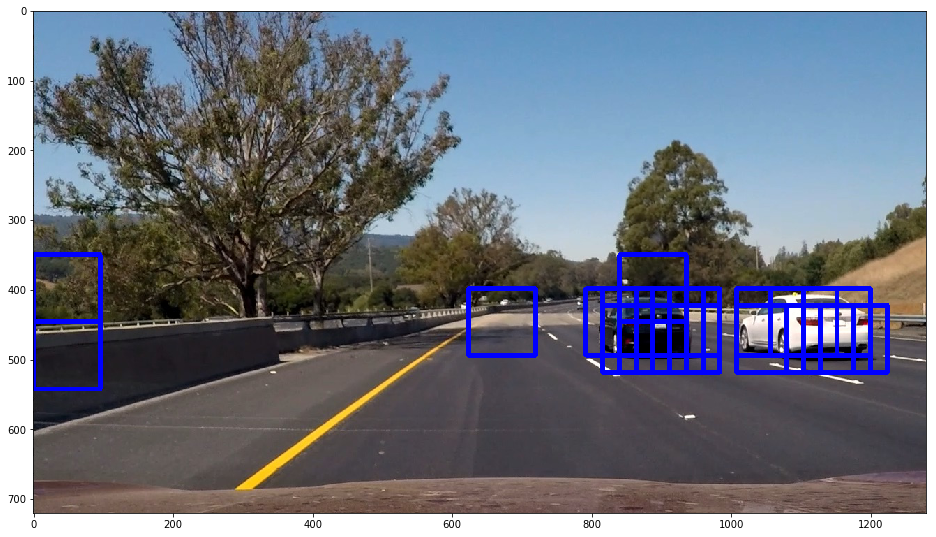
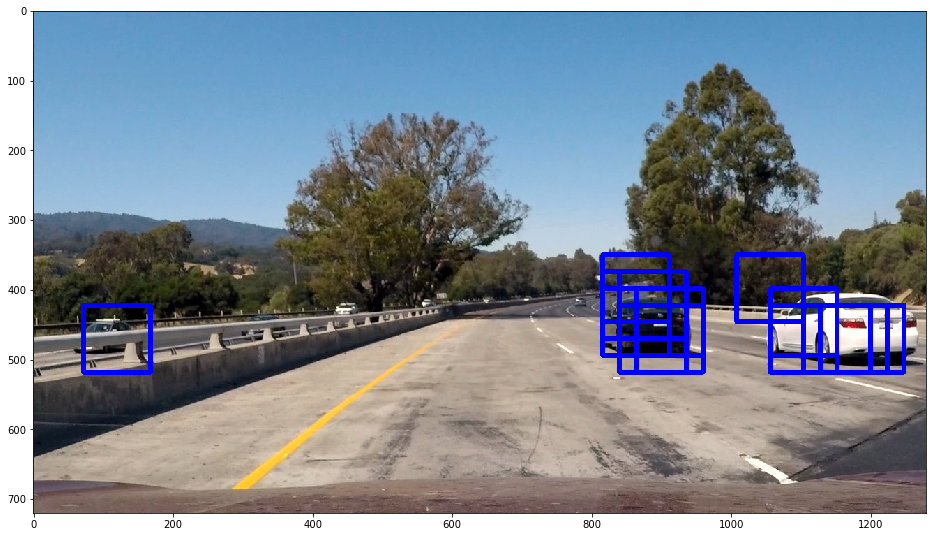
2. Show some examples of test images to demonstrate how your pipeline is working. What did you do to optimize the performance of your classifier?
Codes in find_cars() of tool_functions.py used HOG sub-sampling technique mentioned in the lectures. I tried to use multiprocessing to calculate HOG all 3 channels concurrently but didn't succeed.
Here are some example images:
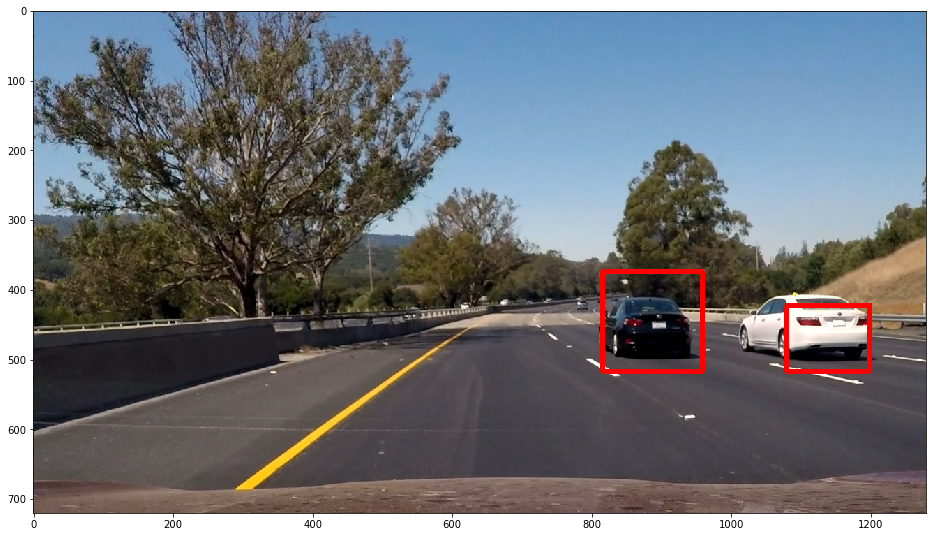
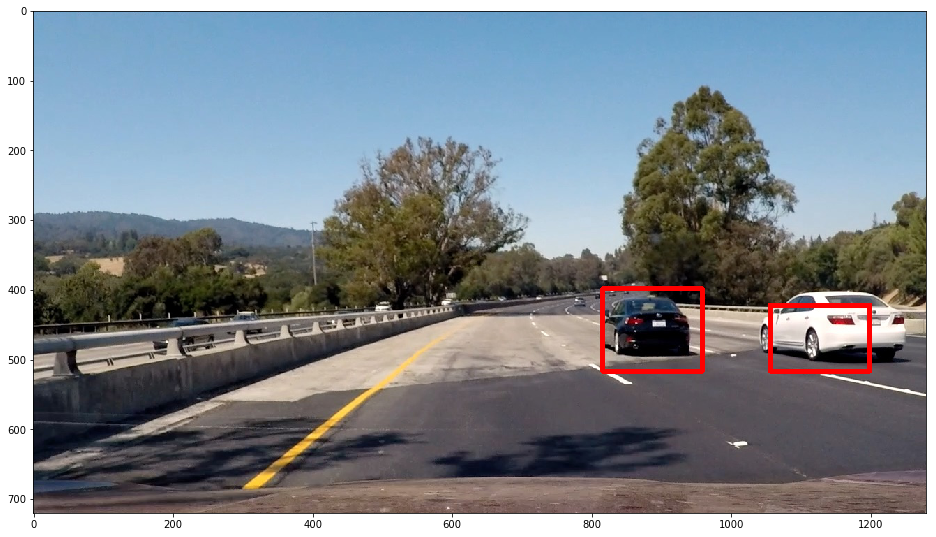
Video Implementation
1. Provide a link to your final video output. Your pipeline should perform reasonably well on the entire project video (somewhat wobbly or unstable bounding boxes are ok as long as you are identifying the vehicles most of the time with minimal false positives.)
Here's a link to my video result
2. Describe how (and identify where in your code) you implemented some kind of filter for false positives and some method for combining overlapping bounding boxes.
To filter false positive, I used a deque to record 30 heatmaps, sum them and average them, them apply a threshold to identify real vehicle positions. The codes are in makeheatmap() of tool_functions.py.
Discussion
1. Briefly discuss any problems / issues you faced in your implementation of this project. Where will your pipeline likely fail? What could you do to make it more robust?
- When training the classifier, issue of memory exhaustion may happen. I tried to solve it with an AWS instance but it's not convenient to use.
- Speed of processing the whole project video may be slow, and slow iteration is bad for experimenting with parameters. I tried to multiprocessing HOG calculations but failed.
